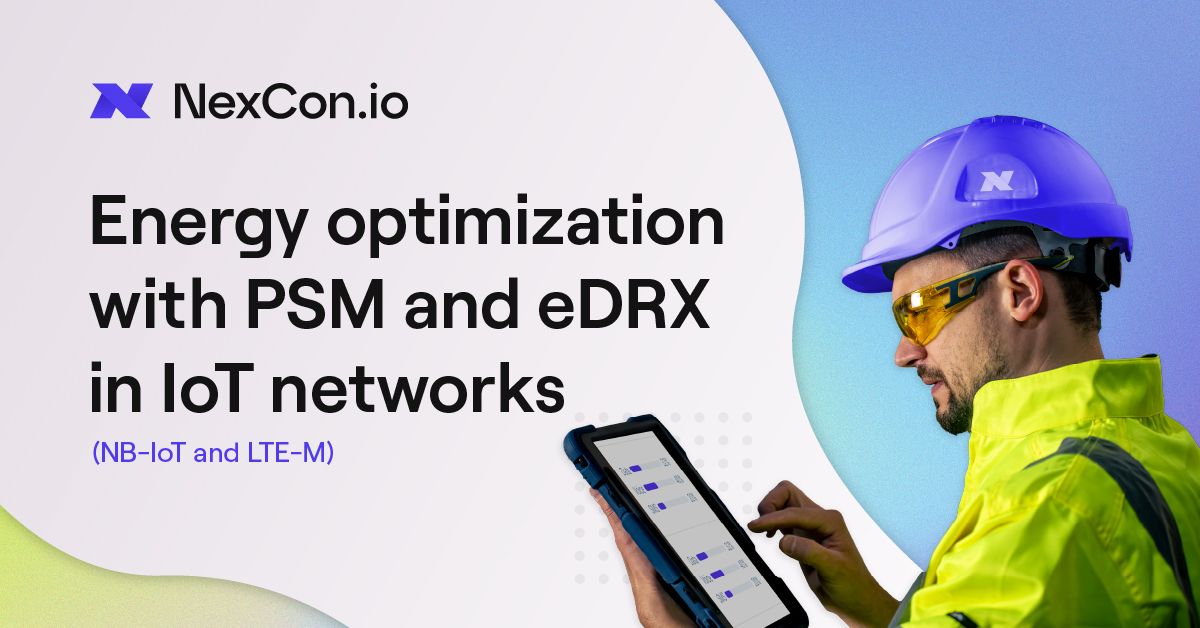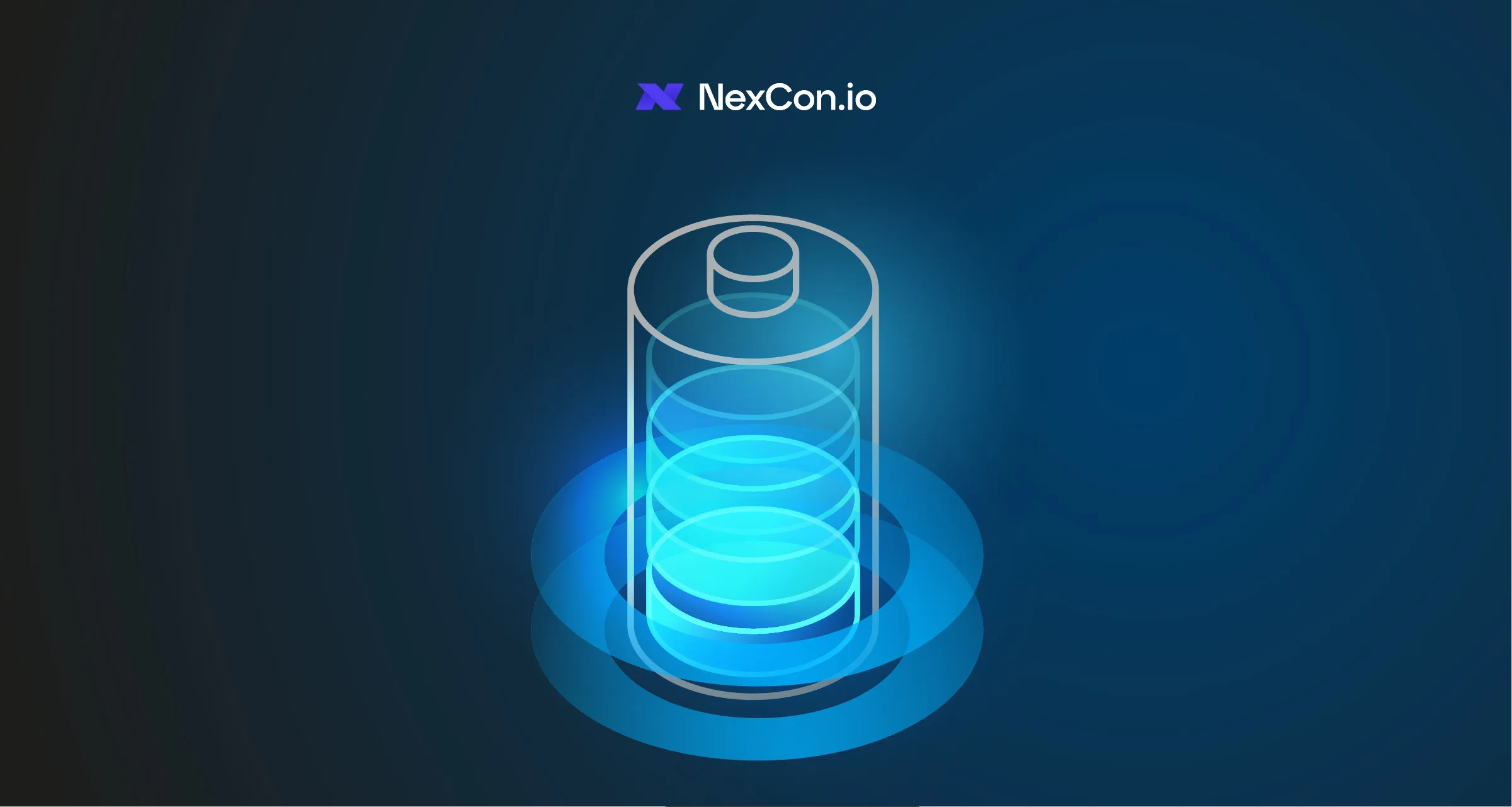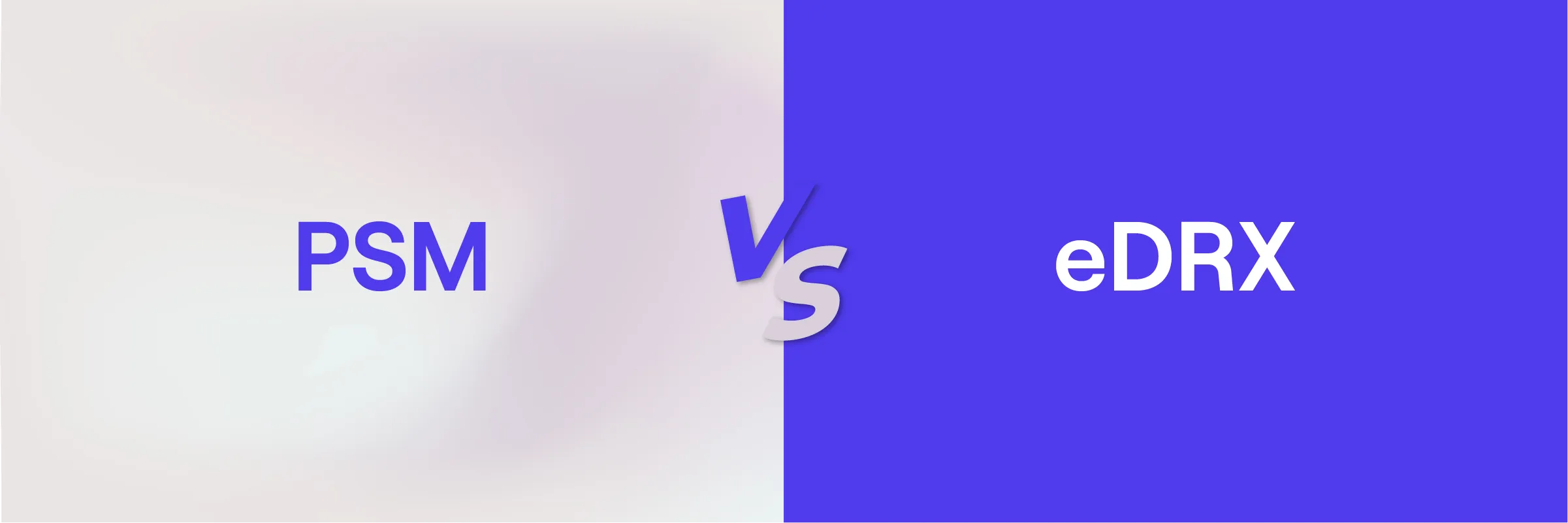Energy Optimization With PSM and eDRX in IoT Networks (NB-IoT and LTE-M)

Kenn Hansen | March 20, 2025

In this post, we will take a closer look at two technologies that help ensure the highest possible energy efficiency in IoT connectivity. We will provide you with a thorough introduction, without going into the details of the technical setup. If you are interested in the technical aspects, we recommend that you consult GSMA’s whitepapers, which we link to in the post.
So why do power saving technologies bring such tremendous value? With the explosive growth of IoT devices, often powered by batteries, energy efficiency has become a key factor in ensuring project profitability. For this reason LPWAN (Low-Power Wide-Area Network) technologies like NB-IoT (Narrowband IoT) and LTE-M (Long Term Evolution for Machines) are designed specifically to minimize power consumption so IoT devices can run for years without maintenance.
One of the ways the LPWAN technologies do this is through the PSM (Power Saving Mode) and eDRX (extended Discontinuous Reception) mechanisms that can extend battery life to over 10 years for a wide range of applications.
In the following, we’ll go through what PSM and eDRX entail technically, how they differ and which usage scenarios they are suitable for.
PSM and eDRX in a nutshell
PSM and eDRX reduce how often devices need to be “awake” on the network, drastically reducing energy consumption. Both mechanisms are built into the NB-IoT and LTE-M standards, which allow IoT devices to save power by limiting how often and for how long they communicate with the network. In general terms, PSM corresponds to a hibernation mode for the device, while eDRX is a form of sleep/slumber mode with periodic awakenings. Both significantly extend battery life, but they work in slightly different ways and are suitable for different purposes.

Power Saving Mode (PSM) - Hibernation mode for IoT devices
Introduced in 3GPP Release 12, Power Saving Mode is a feature that allows the device to go into a hibernation mode for an agreed period of time. When the device activates PSM, it remains registered in the network, but it disconnects for an extended period of time. In this state, the device is not listening for incoming messages and is therefore basically unreachable from the network until it wakes up.
The device and the network agree in advance how long the hibernation will last using timers. In fact, the PSM period can be configured up to 413 days, which is the maximum value in the standard. However, the limit is ultimately defined by the individual operator.
During PSM, the device consumes very little power – typically in the microampere level, which is close to zero compared to normal operation. The device remains registered to the network while it sleeps, so when it wakes up, it doesn’t have to go through a full reconnection or new network registration. While registering to the network itself doesn’t cost a lot of energy, repeated reconnections over the life of the device can add up to significant energy consumption. By avoiding this through PSM, the battery life is drastically extended.
PSM can thus be considered a state almost equivalent to turning the device off completely, but with the important difference that the network keeps the device turned on in its system. The device will typically wake up periodically, for example once a day or after another fixed interval, to briefly notify the network that it is still present (a so-called periodic TAU – Tracking Area Update). When this happens, any data can be transferred and it can go back to hibernation mode. Should a critical event occur during this time, such as a sensor detecting something alarming, the device can always wake up earlier than planned and transmit immediately – no need to wait for the PSM timer to expire or reconnect.
The downside is that while the device is hibernating, the network cannot contact it or push messages out to the device until it wakes up again. PSM is therefore suitable for IoT devices that primarily send data out and do not need to receive messages or commands frequently. It can also be devices where a high latency for incoming messages is acceptable.
GSMA describes PSM as ideal for devices with infrequent data transmission that can tolerate delay on incoming communication.
Extended Discontinuous Reception (eDRX) - sleep/snooze mode
Extended Discontinuous Reception is an extension of the existing DRX feature in mobile networks. In regular LTE operation, devices use DRX (discontinuous reception) to repeatedly turn off the receiver for very short periods of time, typically for milliseconds or a few seconds at a time, to save power without losing calls or messages. eDRX takes this concept and extends the periods when the device is not listening to be much longer than usual. eDRX can be used standalone or combined with PSM.
With eDRX, the device and the network can agree on an extended listening interval, so that the device for example sleeps for several minutes at a time before waking up briefly and listening to see if the network has anything for it. This means that the device is still periodically receptive to network messages, unlike PSM where it does not listen at all for a longer period.
How short an interval depends on the settings: eDRX has a set of predefined sleep periods and the device can request the network for an interval that suits its needs. For NB-IoT, these listen-sleep cycles can be stretched to almost 3 hours, and for LTE-M up to around 43 minutes. During this sleep period, the device uses minimal energy as parts of its circuitry can be turned off to save power.
It is worth noting that while the device is in an eDRX sleep period, it is not contactable – any data from the network will be held/queued and only delivered when the device wakes up at the next eDRX interval. The device will thus “snooze” and if there is no data, it can go back to sleep.
The advantage of eDRX is that you can balance between response time and power consumption: the longer the eDRX interval, the lower the average power consumption, but the longer the latency to receive new messages. Developers can choose the sleep interval that suits their usage scenario and even adjust it over time if needs change.
Technically, eDRX can work both in the device’s idle mode and in its connected mode, depending on the standard’s capabilities. In practice, eDRX will most often be used for devices that want to be woken up by the network from time to time, or in combination with PSM to push power consumption down even further. For example, a device may first be in eDRX where it might listen every 30 minutes, and if it hasn’t heard or sent anything for a long time, it can then go to hibernation mode via PSM.
Most importantly, eDRX offers a flexible middle ground between constant network listening and total silence. The device can stay connected with relatively low frequency listening, which is ideal for those IoT situations where you still want to be able to send messages to the device, but it doesn’t matter that it takes some time before the message is received.

PSM vs. eDRX: Differences and when to use what
Although both PSM and eDRX aim to save energy, their characteristics are different. As a rule of thumb, eDRX is appropriate if the device needs to receive data within a latency of a few seconds to a few hours, while PSM is a better choice if the device can be unavailable for longer periods.
For example, a tracking device on a valuable object will typically need to be localized relatively quickly – eDRX with an interval of perhaps a few minutes or seconds would be ideal so that the tracker can be woken up often enough to provide near real-time tracking. Similarly, systems such as smart grid monitoring or security monitoring, which need to react within minutes to certain events, cannot do without the device listening regularly. eDRX will ensure that data or trigger signals arrive within an acceptable window (e.g. <3 minutes).
Conversely, a water meter or soil moisture sensor in agriculture can easily be dormant for most of the day – here PSM makes more sense as the sensor’s data is not urgent and maximum lifetime is achieved by leaving it completely offline between measurements.
It’s worth mentioning that the choice is not always either-or. Some solutions combine both functions: the device can listen intermittently with eDRX for a period of time if, for example, right after a measurement, a possible command from the server is expected, after which it goes into PSM for a longer hibernation. Often developers will make detailed power consumption calculations for different configurations of PSM/eDRX before determining the final strategy for the device.
Usage scenarios where PSM and eDRX add great value
The significant energy savings from PSM and eDRX open up a range of IoT scenarios previously limited by battery capacity or maintenance costs.
Static sensors and meters such as smart metering and environmental monitoring
This includes water, gas and electricity meters, which are often battery-powered and installed for many years at a time, as well as sensors in agriculture or smart city solutions.
With the deep indoor coverage of the NB-IoT network, such devices can even be placed underground or in basements and still stay connected. PSM allows the meter/sensor to send, for example, a single daily status and remain dormant the rest of the time.
Mobile tracking devices such as asset tracking and fleet management
IoT devices mounted on vehicles, including cars, e-bikes and e-scooters, as well as containers and cargo, also benefit from PSM and eDRX. In these cases, the LTE-M network is often used as it supports mobility better.
For trackers that need to report more frequently, such as every minute or on movement, eDRX will typically be enabled so that the device can receive any commands, including pings or configuration changes, at regular intervals and send frequent position updates. Many modern GPS trackers actually combine both techniques as needed. The result is that even battery-powered trackers can last for years.
These examples illustrate how PSM and eDRX make it possible to realize IoT solutions that were previously not practical. The features help extend battery life, making it realistic to scale IoT projects to thousands of devices without prohibitive maintenance work. At the same time, the benefits of cellular networks – coverage, reliability and two-way communication – are retained, but with very low energy consumption.
Conclusion
Energy optimization is a critical success factor in the vast majority of IoT deployments, and PSM and eDRX are two of the most effective tools to achieve this. By understanding and utilizing these capabilities, IoT specialists and decision makers can design solutions where devices run for years on battery power and where the need for physical maintenance is minimal. This reduces overall costs and makes it possible to collect data even from remote or inaccessible locations in an economically sustainable way.
NB-IoT and LTE-M technologies are created with this balance between low power consumption, good coverage and sufficient data capacity in mind, and PSM/eDRX are concrete examples of how the standards deliver on that promise.
An IoT-specialized connectivity provider like NexCon.io can advise on global NB-IoT/LTE-M support, as well as optimizing device firmware to handle the sleep cycle correctly.
We understand the importance of connectivity solutions that are both innovative and reliable. As a NexCon.io customer, you can buy IoT and M2M SIM cards directly in our webshop and easily manage them in the dashboard afterwards with several features available like data pools, mass editing and IMEI locking. Create a free account here to get started.
If you want to dive deeper into the technologies behind NB-IoT and LTE-M, we recommend checking out the GSMA reports and technical whitepapers for more details on implementing PSM/eDRX in practice, including: GSMA – “Development Guide for Industrial IoT using NB-IoT” (2019), GSMA – “Mobile IoT Deployment Guide” (2022) and GSMA – “Improving Energy Efficiency for Mobile IoT” (2022).